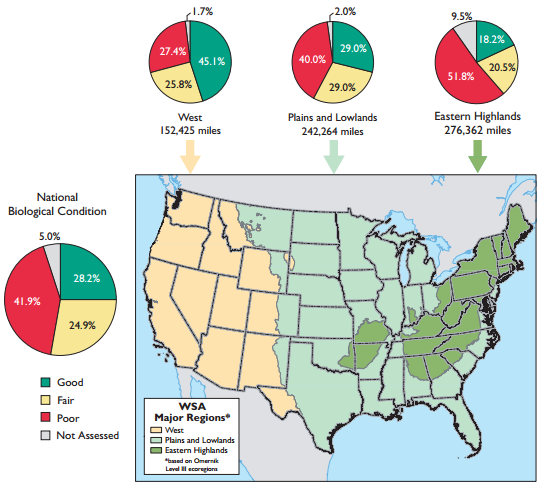Wadeable Streams Assessment
The Wadeable Streams Assessment (WSA) is a first-ever statistically-valid survey of the biological condition of small streams throughout the U.S. EPA worked with the states to conduct the assessment in 2000-2004. 1,392 sites were selected at random to represent the condition of all streams in regions that share similar ecological characteristics. Participants used the same standardized methods at all sites, to ensure results that are comparable across the nation.
Key findings from 2004:
Biological condition:
- 42% of the nation's stream length is in poor biological condition.
- 25% is in fair biological condition.
- 28% is in good biological condition.
- Five percent of the nation's stream length was not assessed for biological condition during the WSA.
Regional results:
- Of the three major regions discussed in this report, the West is in the best biological condition, with 45% of stream length in good biological condition.
- The Plains and Lowlands region has almost 30% of stream length in good biological condition and 40% in poor biological condition.
- The Eastern Highlands region presents the most concerns, with only 18% of stream length in good biological condition and 52% in poor biological condition.
Key stressors:
- The most widespread stressors observed across the country and in each of the three major regions are nitrogen, phosphorus, riparian disturbance, and streambed sediments.
- Increases in nutrients, like nitrogen and phosphorus, and streambed sediments have the highest impact on biological condition.

